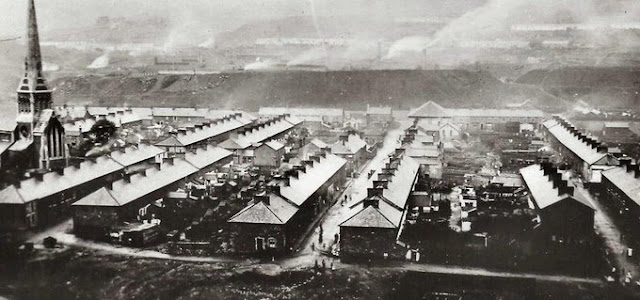"I recall the inhabitants of Llangollen, Denbighshire, ascending Dinas Bran on Easter Day to greet the rising of the sun with three somersaults."
An account of Easter Sunrise from Rev. John Williams of Glanmor.
When Welsh folk customs are mentioned, we automatically conjure up images of the Wren, the Mari Lwyd and Old New Year. We don't seem to talk about what the Welsh did during the Easter period.
In this blogpost I take a look at traditional Welsh Easter folk customs.
 |
| Dydd Sul y Blodau at Ogmore Vale. |
Dydd Sul y Blodau and Easter Sunday were (and still are) the days that the Welsh tend the graves of their loved ones.
An account of the tending of graves in the Vale of Glamorgan from Charles Redwood:
“The sides of the graves were raised up with fresh turf and fresh earth was placed on the surface; the end stones were whitewashed and women planted rosemary and rue whilst girls brought baskets of crocuses, daffodils and primroses which they placed in somewhat fantastic figures upon all graves.”
In rural parts of Wales, particularly north Wales, no elaborate flowers were placed on graves on these days. Instead, people chose to clean the graves of their loved ones. The graves were whitewashed, weeds were pulled and simple tributes were left by loved ones.









